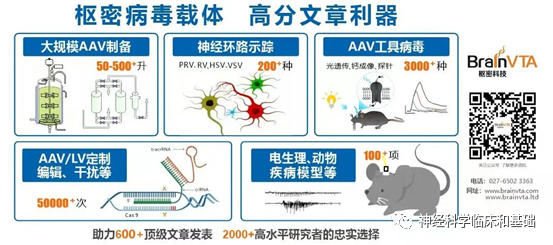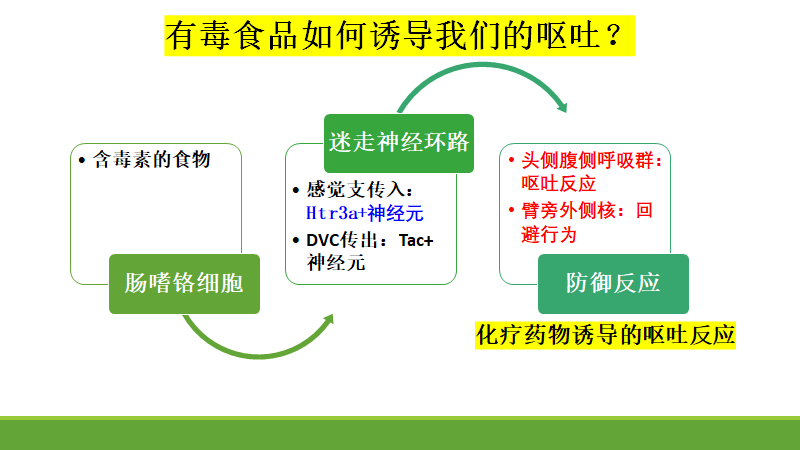Cell—脑-肠轴研究重磅突破:有毒食品如何诱导我们的呕吐反应?
2022-11-18 神经科学临床和基础 神经科学临床和基础
摄入毒素污染的食物后,大脑会启动一系列防御反应(例如恶心、干呕和呕吐)。大脑如何检测摄入的毒素并协调不同的防御反应仍不清楚。

 中文摘要
中文摘要
摄入毒素污染的食物后,大脑会启动一系列防御反应(例如恶心、干呕和呕吐)。大脑如何检测摄入的毒素并协调不同的防御反应仍不清楚。在这里,研究人员开发了一种基于小鼠的范式来研究细菌毒素诱导的防御反应。利用这一范式,他们确定了一组分子定义的肠到脑的环路和脑内的环路,它们共同介导毒素诱导的防御反应。肠-脑环路由Htr3a+迷走神经感觉神经元亚群组成,该亚群将毒素相关信号从肠嗜铬细胞传递到背侧迷走神经复合体(DVC)中的Tac1+神经元。Tac1+DVC神经元分别投射到头侧腹侧呼吸群和臂旁外侧核,驱动干呕样行为和条件性味道回避。操纵这些环路也会干扰化疗药物阿霉素诱导的防御反应。这些结果表明,食物中毒和化疗募集了相似的神经环路模块来启动防御反应。
英文摘要
After ingestion of toxin-contaminated food, the brain initiates a series of defensive responses (e.g., nausea, retching, and vomiting). How the brain detects ingested toxin and coordinates perse defensive responses remains poorly understood. Here, we developed a mouse-based paradigm to study defensive responses induced by bacterial toxins. Using this paradigm, we identified a set of molecularly defined gut-to-brain and brain circuits that jointly mediate toxin-induced defensive responses. The gut-to-brain circuit consists of a subset of Htr3a+ vagal sensory neurons that transmit toxin-related signals from intestinal enterochromaffin cells to Tac1+ neurons in the dorsal vagal complex (DVC). Tac1+ DVC neurons drive retching-like behavior and conditioned flavor avoidance via pergent projections to the rostral ventral respiratory group and lateral parabrachial nucleus, respectively. Manipulating these circuits also interferes with defensive responses induced by the chemotherapeutic drug doxorubicin. These results suggest that food poisoning and chemotherapy recruit similar circuit modules to initiate defensive responses.
本网站所有内容来源注明为“梅斯医学”或“MedSci原创”的文字、图片和音视频资料,版权均属于梅斯医学所有。非经授权,任何媒体、网站或个人不得转载,授权转载时须注明来源为“梅斯医学”。其它来源的文章系转载文章,或“梅斯号”自媒体发布的文章,仅系出于传递更多信息之目的,本站仅负责审核内容合规,其内容不代表本站立场,本站不负责内容的准确性和版权。如果存在侵权、或不希望被转载的媒体或个人可与我们联系,我们将立即进行删除处理。
在此留言







